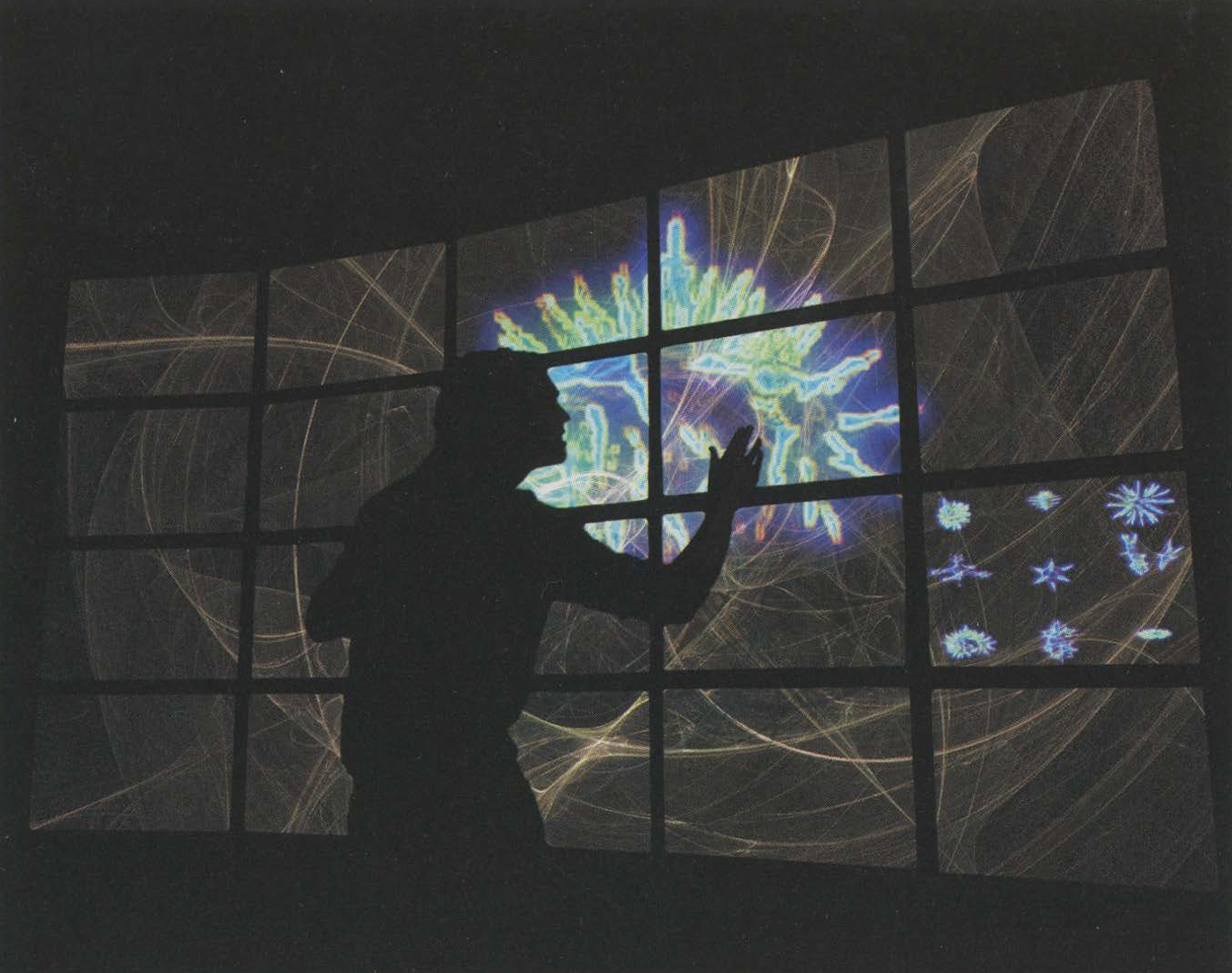Ruth West: ATLAS in silico
Artist(s):
Collaborators:
- JP Lewis
-
- Stanford University
- Todd Margolis
- Iman Mostafavi
-
- University of California
- Tommy Chheng
-
- University of California
- Rajvikram Singh
-
- National Center for Microscopy and Imaging Research
- University of California
- Jurgen Schulze
-
- Immersive Visualization Laboratory
- California Institute for Telecommunications and Information Technology
- University of California
- Javier I. Girado
-
- Immersive Visualization Laboratory
- California Institute for Telecommunications and Information Technology
- University of California
- Weizhong Li
-
- California Institute for Telecommunications and Information Technology
- University of California
- Paul Gilna
-
- California Institute for Telecommunications and Information Technology
- University of California
- Kayo Arima
-
- California Institute for Telecommunications and Information Technology
- University of California
- Jeffrey Lien
-
- University of California
- Tom Cassey
-
- University of California
Title:
- ATLAS in silico
Exhibition:
Creation Year:
- 2007
Category:
Artist Statement:
As genomics digitizes life, the organism and self are initially lost to data, but ultimately a broader meaning is re-attained. ATLAS in silico reflects upon humanity’s long-standing quest for an understanding of the nature, origins, and unity of life by interrogating metagenomics and the resultant shift from an organism-centric to a sequence-centric view of nature. In parallel to challenges that Darwin’s work on natural selection posed to 19th-century representations of nature associated with concepts of species fixity, vast and abstract metagenomics data pose a fundamental challenge to our ability, in the 21st century, to represent and intuitively comprehend nature. This work offers an intimate aesthetic encounter with millions of recently discovered sequences from the the Global Ocean Survey
and its associated metadata, within an immersive visual atlas. Eliciting an aesthetically impelled metagenomics viewpoint in order to explore alternative modalities for representing nature, it calls out the relationship between data and understanding, and between data about life and the life that it describes.
Technical Information:
The visual atlas is an aesthetically derived multidimensional visualization of metagenomics data from the GOS database. It is situated within a virtual environment that reveals associated metadata. Both the visual atlas and virtual environment are constructed from a custom computer graphics code, including a unique shape grammar that maps genomic
data to visual form. The installation employs an infrared motiontracking system, together with the Varrier 55 tile, a 100-megapixel barrier strip auto-stereoscopic display.
Participants experience the 3D environment without stereo glasses and by moving within the field of view of the motion tracking system, they interact with luminous three-dimensional forms representing millions of GOS sequences. The interaction software framework is built on the extensible and distributed Collaborative Visualization and Simulation
Environment (COVISE) system. ATLAS in silico is made possible by generous support from: California Institute for Telecommunications and Information Technology (Calit2), CAMERA (Community Cyberinfrastructure for Advanced Microbial Ecology Research and Analysis), Center for Research in
Computing and the Arts (CRCA), National Center for Microscopy and Imaging Research(NCMIR), and Electronic Visualization Laboratory, University of Illinois at Chicago (EVL).





